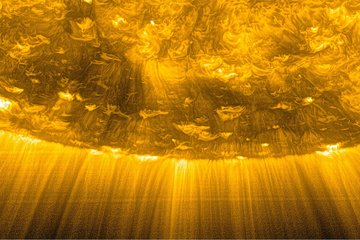How common are destructive solar superflares?
Putting stellar superflares from SUIT/Aditya-1 data on the same scale as the solar flares
Solar flares are sudden outbursts of radiation on the surface of the Sun. They are caused by the release of the magnetic energy stored in the solar atmosphere. Solar flares are often accompanied by the expulsion of material, known as a coronal mass ejection. This material can reach Earth, leading to disturbances in the magnetosphere and even in the Earth’s upper atmosphere. Of particular interest for humanity is the question of how often the Sun unleashes ‘superflares’ which are much more energetic than the usual solar flares. While the period of direct solar observations is too short to answer this question, an exciting possibility to answer it is brought by the observations of solar analogs, i.e. stars very similar to the Sun. The Kepler and TESS space telescopes have revealed that many of them experience superflares with estimated energies several orders of magnitude larger than what we know for the Sun.
The PhD project deals with putting these stellar superflares on the same scale as the solar flares and hence working out how common solar superflares are. For this purpose data from the SUIT instrument on Aditya-1 space mission will be used, but also computations of the spectrum of the radiation emitted during a flare. The student can choose to concentrate more on the data analysis or on the theory part.













